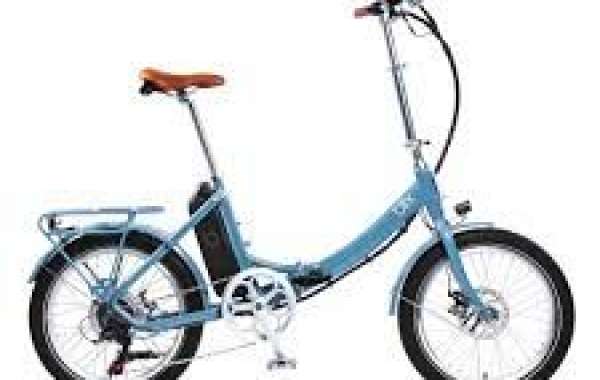Electric folding bikes have gained popularity for their convenience, portability, and efficiency. One of the key aspects that potential buyers often inquire about is the speed of these bikes. Understanding how fast an electric folding bike can go is essential for assessing its suitability for various commuting needs and riding preferences. This article explores the factors influencing the speed of electric folding bikes, typical speed ranges, and considerations for safe and legal riding.
Factors Influencing Speed
Several factors influence the speed of an electric folding bike, including motor power, battery capacity, bike design, rider weight, terrain, and local regulations.
- Motor Power: The motor is a critical component that determines the bike's speed. Electric folding bikes typically come with motors ranging from 250 watts to 750 watts. Higher wattage generally means more power and higher potential speeds.
- Battery Capacity: The battery powers the motor, and its capacity, measured in watt-hours (Wh), affects the duration and speed at which the bike can travel. Larger batteries can sustain higher speeds for longer periods.
- Bike Design: Aerodynamics, weight distribution, and frame design play significant roles in determining the bike's speed. Lightweight, streamlined designs can achieve higher speeds with less effort.
- Rider Weight: The combined weight of the rider and any cargo affects acceleration and maximum speed. Heavier loads require more power to achieve and maintain higher speeds.
- Terrain: Flat, smooth surfaces allow for higher speeds, while uphill climbs, rough terrain, and headwinds can reduce speed.
- Local Regulations: Many regions have laws regulating the maximum speed of electric bikes to ensure safety. These regulations vary and can impact how fast an e-bike can legally go.
Typical Speed Ranges
Electric folding bikes can be classified into different categories based on their speed capabilities and motor assistance levels:
- Class 1 E-Bikes: These bikes provide pedal assistance only and typically have a top speed of 20 mph (32 km/h). The motor assists while the rider pedals but ceases to provide power once the bike reaches the maximum speed.
- Class 2 E-Bikes: Similar to Class 1, these bikes have a maximum speed of 20 mph (32 km/h). However, they also feature a throttle mode, allowing the rider to engage the motor without pedaling.
- Class 3 E-Bikes: These bikes offer pedal assistance up to 28 mph (45 km/h). They do not have a throttle mode and are often subject to more stringent regulations due to their higher speed.
- Speed Pedelecs: Some electric folding bikes, known as speed pedelecs, can exceed 28 mph (45 km/h). These high-speed models often require additional licensing and insurance.
Safety Considerations
While higher speeds can make commuting more efficient, safety should always be a priority when riding an electric folding bike. Here are some key safety considerations:
- Wear Protective Gear: Always wear a helmet and other protective gear to reduce the risk of injury in case of an accident.
- Follow Traffic Laws: Adhere to local traffic regulations, including speed limits and bike lane usage. Be aware of specific e-bike laws in your area.
- Regular Maintenance: Ensure your bike is in good working condition. Regularly check brakes, tires, and the electrical system to maintain safe riding conditions.
- Be Visible: Use lights, reflectors, and wear bright clothing to increase visibility, especially when riding at higher speeds or in low-light conditions.
- Ride Defensively: Stay alert and anticipate the actions of other road users. Higher speeds require quicker reaction times, so always be prepared for sudden stops or changes in traffic patterns.
Conclusion
The speed capabilities of electric folding bikes vary widely based on factors such as motor power, battery capacity, and local regulations. Class 1 and Class 2 e-bikes typically reach speeds of 20 mph, while Class 3 models can go up to 28 mph. Speed pedelecs offer even higher speeds but come with additional regulatory requirements.
When choosing an electric folding bike, consider your commuting needs, local laws, and safety requirements. While the allure of high speeds is appealing, balancing speed with safety ensures a pleasant and secure riding experience. As technology advances, electric folding bikes will likely continue to evolve, offering faster and more efficient options for urban commuters and recreational riders alike.














